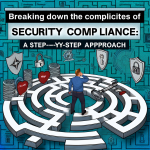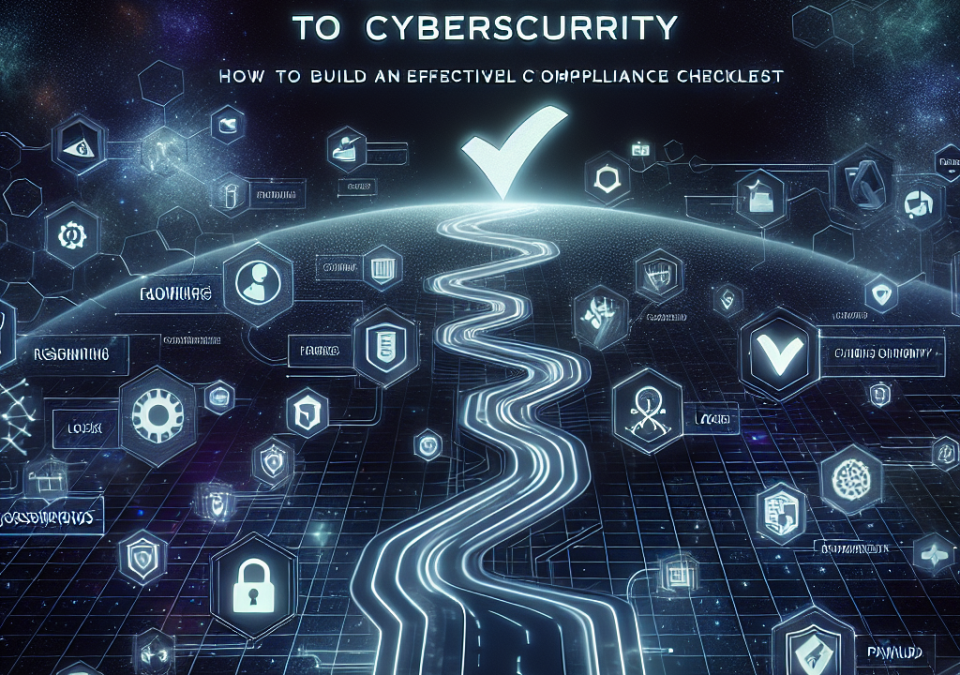
Securing Sensitive Data: Essential Compliance Requirements for Organizations
July 15, 2025
Breaking Down the Complexities of Security Compliance: A Step-by-Step Approach
July 16, 2025
In today’s digital landscape, where data breaches and cyber threats loom large, ensuring cybersecurity is not just a technical challenge but a critical business imperative. Organizations face a patchwork of regulations and standards aimed at safeguarding their data. To navigate this intricate environment, an effective compliance checklist serves as your cybersecurity guide. This article will outline the essential elements required to build a robust compliance checklist that aligns with your organization’s goals.
Understanding the Importance of Compliance
Compliance in cybersecurity refers to adhering to laws, regulations, standards, and best practices designed to protect sensitive information. Non-compliance can result in hefty fines, legal repercussions, and reputational damage. Moreover, a strong compliance framework not only protects your organization but also fosters customer trust and loyalty.
Steps to Build an Effective Compliance Checklist
1. Identify Applicable Regulations and Standards
The first step in creating a compliance checklist is identifying the specific regulations and standards relevant to your industry. Common frameworks include:
- General Data Protection Regulation (GDPR): Applicable to organizations that handle EU citizens’ data.
- Health Insurance Portability and Accountability Act (HIPAA): Pertains to the healthcare sector.
- Payment Card Industry Data Security Standard (PCI DSS): Relevant for businesses processing credit card transactions.
By understanding which regulations apply to your organization, you can tailor your checklist accordingly.
2. Conduct a Risk Assessment
A risk assessment allows you to identify vulnerabilities and manage potential threats. This involves:
- Evaluating assets (data, systems, and networks) and their importance.
- Identifying potential threats (malware, unauthorized access, etc.).
- Assessing the impact of these threats on your operations.
This assessment will inform your compliance checklist, prioritizing the most crucial areas for protection.
3. Define Security Controls
Once risks are identified, the next step is to implement appropriate security controls. Controls can be categorized into various types, including:
- Administrative Controls: Policies and procedures that govern employee behavior and data handling practices.
- Technical Controls: Security software and hardware solutions, such as firewalls, encryption, and anti-virus programs.
- Physical Controls: Measures that protect physical assets, such as secure access to facilities and environmental controls.
List these controls clearly in your checklist, specifying the implementation requirements for each.
4. Establish Monitoring and Reporting Mechanisms
Compliance isn’t a one-time task; it requires ongoing monitoring and auditing. Incorporate the following into your checklist:
- Regular Security Audits: Schedule periodic reviews of your policies, controls, and practices to ensure adherence.
- Incident Response Plan: Develop a plan for detecting, responding to, and recovering from breaches.
- Training Programs: Regularly educate staff about security policies and their roles in maintaining compliance.
5. Document and Update Your Checklist
A compliance checklist must be a living document. Proper documentation ensures that every aspect is transparent and accountable. Regularly update your checklist to reflect changes in regulations, emerging threats, and organizational changes.
6. Engage Stakeholders
Effective compliance requires buy-in from all levels of the organization, including management, IT, and other departments. Engage these stakeholders during the checklist development process to ensure:
- Comprehensive input based on different perspectives.
- Organizational alignment on compliance priorities.
- Enhanced accountability across departments.
7. Use Technology to Your Advantage
Leverage cybersecurity tools and solutions that streamline compliance management. Compliance management software can automate tracking, reporting, and auditing, helping you stay ahead of your compliance requirements without overwhelming your team.
Conclusion
Building an effective compliance checklist is an essential step in your cybersecurity roadmap. By understanding applicable regulations, assessing risks, defining controls, and maintaining ongoing oversight, your organization can enhance its security posture and mitigate potential threats.
Remember, compliance is not just about meeting requirements; it’s about creating a culture of security awareness that protects your organization’s valuable assets. As cyber threats continue to evolve, staying proactive and adaptive will ensure that your compliance checklist remains a cornerstone of your cybersecurity strategy.







